Exploring Famous Tangos: Cultural Significance Unveiled
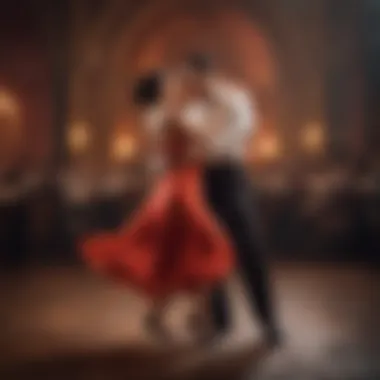
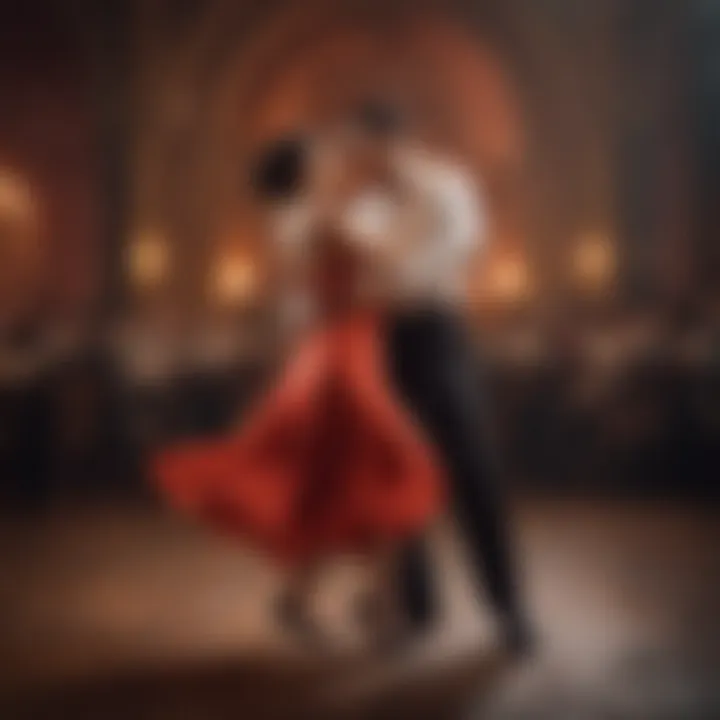
Intro
Tango, a cultural symbol for Argentina, resonates deeply within both music and dance. Its powerful rhythms and emotive melodies invite exploration. This genre has evolved significantly, shaping social identities, reflecting political changes, and transcending geographical boundaries. To understand its essence, one must delve into notable artists and compositions.
The tango has unique features that set it apart from other musical forms. The connection between music and dance is profound, embodying a conversation through movement. Each note tells a story, and every dance step conveys emotion. An examination of famous tangos reveals the intricate relationships woven into their composition and performance.
In this article, we will explore essential artists and compositions that have defined tango's legacy. We will analyze how its themes reflect cultural narratives, as well as the socio-political climates that influenced its evolution.
Artist Profile
Biography and Background
Tango artists often encompass a diverse range of backgrounds, each contributing to the rich tapestry of this musical style. One prominent figure is Carlos Gardel, often referred to as the iconic voice of tango. Born in Toulouse, France, in 1890, Gardel moved to Buenos Aires as a child. His charismatic presence and deep voice captivated audiences, revolutionizing how tango was perceived. His contributions in the early 20th century laid the groundwork for the genre's global reach.
Another significant artist is Astor Piazzolla, an innovative tango composer and bandoneón player. Born in Mar del Plata, Argentina, in 1921, he is credited with pushing the boundaries of traditional tango music. His incorporation of jazz elements and classical textures marks a departure from the standard form, allowing tango to evolve into a more complex art form.
Major Influences and Inspirations
Influences on tango artists vary widely, drawn from personal experiences, cultural shifts, and societal changes. Carlos Gardel found inspiration in the urban environment of Buenos Aires and the immigrant stories surrounding him. This backdrop deeply influenced his music's themes of love and longing.
Astor Piazzolla, in contrast, was inspired by multiple genres. He absorbed sounds from jazz and classical music, crafting a new musical language. His different experiences shaped his compositions, leading many to describe his sound as "nuevo tango."
Song Analysis
Theme and Lyrics Breakdown
Tango songs often portray profound emotional narratives focusing on love, loss, and nostalgia. For example, Gardel's "La Cumparsita" speaks to a tale of unrequited love and heartbreak. The poignant lyrics encapsulate feelings that resonate universally, making them relatable to a wide audience.
Piazzolla's works, such as "Libertango," reflect the struggle for freedom and individuality. Its powerful instrumentation and driving beat evoke a sense of urgency, contrasting with the introspection found in traditional tango lyrics.
Instrumentation and Composition
The instrumentation in tango is distinctive, typically featuring instruments like the bandoneón, piano, violin, and double bass. These components create a rich sound that supports the dance's passionate movements. In Gardel’s songs, the bandoneón’s melancholic wail draws listeners into a deeper emotional experience.
Piazzolla introduced new arrangements and instrumentations that differed from traditional tango. His fusion of instruments leads to an expansive soundscape, captivating audiences with both its complexity and innovation.
"Tango is not just a dance; it is a dialogue between heart and soul, expressed through music and movement." - Carlos Gardel
Foreword to Tango
Tango is much more than just a dance; it is a profound expression of cultural identity, emotion, and history. This section lays the groundwork for understanding tango's significance within the global music landscape. By exploring its foundations, both musically and socially, the article prepares the reader for a deeper examination of famous tangos and their nuanced roles in society.
Understanding tango's origins reveals how diverse influences from European, African, and indigenous cultures intertwined to give birth to this captivating art form. The dance and music reflect themes of longing, passion, and resilience, which resonate across generations.
For music enthusiasts and aspiring musicians, grasping the essence of tango can enhance their appreciation of its rhythmic complexity and emotional depth. The structure of tango music, with its specific timing and instrumentation, serves as a rich topic for those seeking to learn more about music theory in a real-world context.
In this exploration of tango, we will delve into its origins and cultural expressions. The journey begins with an understanding of where it all started, leading to its evolution as a societal voice.
The Evolution of Famous Tangos
The evolution of famous tangos is essential for understanding how this genre has changed and adapted over time. Tango music and dance did not emerge in isolation. Instead, they reflect a confluence of various musical styles and cultural influences. This section examines various historical periods and pivotal moments that shaped tango into what it is today. By studying the evolution of tangos, one can appreciate not only the music but also the societal and cultural dynamics at play.
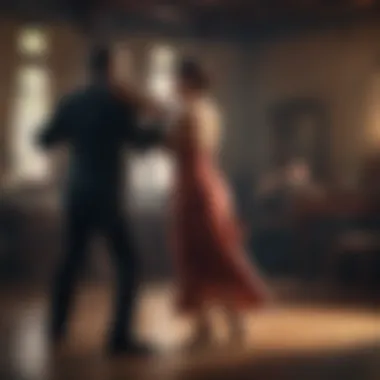

Early Influences in Tango Music
The early influences in tango music include a blend of African rhythms, European classical music, and local Argentine folk traditions. The origins are often traced back to the late 19th century in Buenos Aires. The arrival of immigrants from Italy, Spain, and other parts of Europe played an important role. They brought their musical styles, which intermingled with local cultures. For instance, the guitarra, similar to forms from Spain, can be seen alongside the African candombe rhythms. This eclectic mix set the foundation for what would become tango.
The bandoneón, an accordion-like instrument, gained prominence during this period. It has become one of the defining features of tango music. It added emotional depth, making it possible for musicians to convey a range of sentiments. Songs like "La Cumparsita" reflect these early influences, creating a poignant narrative that resonates through the ages.
The Golden Age of Tango
The Golden Age of Tango spanned from the 1930s to the 1950s, marking a cultural phenomenon that solidified tango's place in music history. During this time, tango evolved from its working-class roots into a mainstream entertainment form. Orchestras led by renowned musicians like Carlos Gardel became household names. Gardel's voice and charisma contributed significantly to the genre's popularity. It is during this golden era that the music began to draw more from jazz elements, broadening its appeal.
Dance venues, known as milongas, flourished, creating vibrant social spaces. For many, tango became synonymous with Argentine culture, with its blend of passion and elegance. The choreography became more intricate, and performers worked to perfect their style, making dance a critical part of tango’s allure.
Tango's Global Spread
The global spread of tango began post-World War II, when many artists took the genre beyond the borders of Argentina. Countries such as France and the United States embraced tango. In France, tango was often associated with the cabaret scenes, introducing innovative interpretations that attracted diverse audiences. As notable artists toured internationally, they brought their unique light to tango.
In the United States, the boom in Latin music during the 1940s gave rise to a new interest in tango. Many American musicians began to incorporate tango elements into their own work. This fusion helped to cement tango in global music culture. The choreography influenced the ballroom dance scene, making it a beloved style worldwide.
Overall, the evolution of famous tangos illustrates a complex interplay of musical styles, societal changes, and cultural exchanges. Recognizing these elements allows music enthusiasts and aspiring musicians to appreciate the significance and depth of tango in music history.
Iconic Tangos: A Detailed Analysis
The importance of iconic tangos in this article cannot be overstated. These pieces are not mere songs; they are cultural treasures that embody the essence of tango as a whole. Each composition tells a story and carries the weight of history, emotion, and social commentary. Understanding these famous tangos offers insights into the evolution of a genre that has impacted countless aspects of music and culture.
Iconic tangos also represent the pinnacle of artistic expression within tango music. They showcase the innovative spirit of artists and the complex interplay between music, lyrics, and dance. Studying these masterpieces provides aspiring musicians and music students a deeper comprehension of rhythm, melody, and the feelings they can evoke.
Here, we will closely analyze three specific tangos that have defined this genre and left a lasting impact on audiences around the world.
La Cumparsita: The Heart of Tango
La Cumparsita stands out as perhaps the most renowned tango composition. Composed by the Uruguayan musician Alberto Ascari and with lyrics by Alfredo Le Pera, its translation means "The Little Parade." The piece debuted in 1916 and has since gained unparalleled recognition.
Its melancholic melody and poignant lyrics depict themes of lost love and heartache. This emotional weight resonates with both dancers and listeners. The music carries an unmistakable rhythm that strikes deep in the hearts of those who hear it. As a beloved classic, La Cumparsita not only represents tango but also speaks to universal human experiences, making it relevant beyond Argentine borders.
"La Cumparsita encapsulates the very essence of tango – a beautiful blend of passion and sorrow that continues to touch souls across generations."
El Choclo: A Timeless Classic
El Choclo is another important piece in the tango canon. Composed by Ángel Villoldo in the early 20th century, this piece is often considered an essential staple of tango music. The title, which means "The Corn," refers to a slang term, alluding humorously to the way the dance and music evoke the richness of life.
Its lively tempo and joyful melodies make it an enjoyable piece for both dancers and musicians. The composition has been covered by numerous artists, further solidifying its place in tango history. Its catchy refrain elevates the mood of any performance, demonstrating how tango can exude joy amidst its characteristic intensity. El Choclo serves as a reminder of the genre's versatility, allowing for both expressive and lively interpretations.
A Media Luz: The Poetic Tango
A Media Luz, which translates to "Half Light," takes a more reflective approach. Crafted by Edgardo Donato in 1922, this piece captures the intimate moments of tango. Its soft melody paired with tender lyrics evokes a sense of nostalgia and longing. This tango invites listeners into a dimly lit room where lovers share their dreams and whispers.
The combination of a gentle waltz-like feel and poignant lyrics captures the subtleties of human connection. It's a beautiful example of how tango can explore deep emotional landscapes. A Media Luz effectively illustrates the poetic side of tango, enriching the genre's legacy.
In concluding this section, it is clear that the iconic tangos serve not just as musical compositions but also as cultural artifacts. By examining La Cumparsita, El Choclo, and A Media Luz, one can appreciate the range and depth of emotions tango encompasses. Each piece is a significant contribution to the broader narrative of tango as a central element of Argentine identity and beyond.
Prominent Tango Artists
The world of tango is profoundly shaped by its artists. These figures not only defined the genre, but also elevated it to a cultural phenomenon. Their contributions span from historic recordings to live performances that resonate with audiences globally. Understanding the legacy of prominent tango artists helps to appreciate the music's evolution and its social relevance. Each artist introduces their own interpretation and emotional depth, thus enriching the tango landscape.
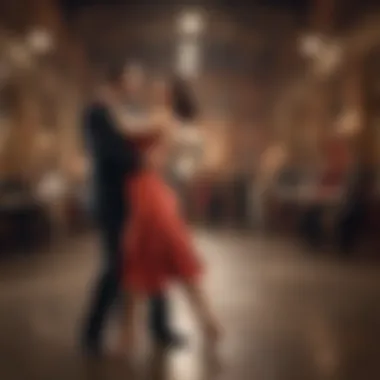
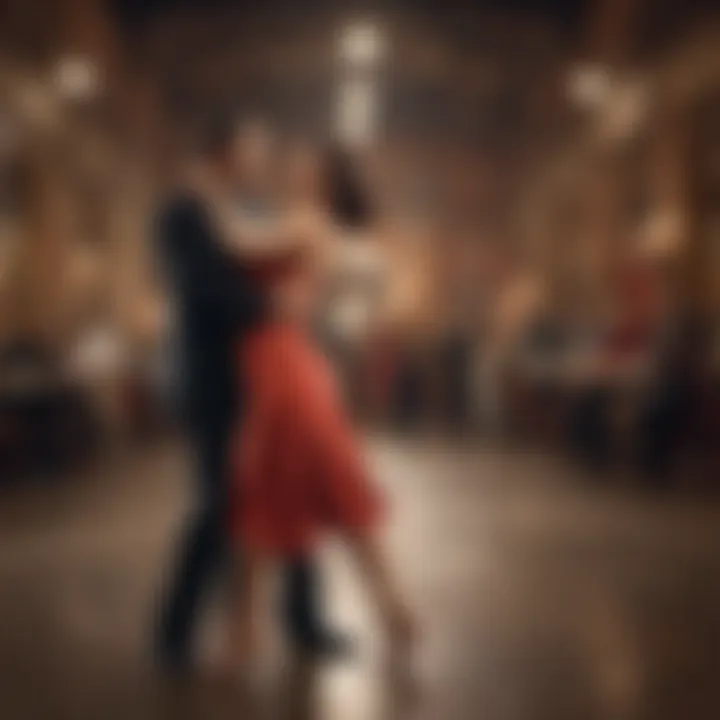
Carlos Gardel: The Voice of Tango
Carlos Gardel is often regarded as the definitive voice of tango. His deep, emotive singing style elevated the genre and brought it to new heights of popularity in the 20th century. Born in France, Gardel moved to Argentina at a young age, where he developed his musical career.
His most famous songs, such as "Mi Buenos Aires Querido" and "La Cumparsita," are seen as essential listening for anyone wanting to grasp tango's musical essence. Gardel's innovative approach to blending lyrical poetry with melody played a significant role in shaping the tango genre itself.
Gardel also expanded the reach of tango music through films. His performances brought tango from the dance halls to the silver screen, showcasing the art form to a wider audience. His untimely death in a plane crash in 1935 left a vacuum, but his influence remains inarguable, as many contemporary performances draw inspiration from his style and artistry.
Astor Piazzolla: The Revolutionary
Astor Piazzolla redefined tango for the modern age. He integrated elements of jazz and classical music, thus creating a new style known as "nuevo tango." This fusion brought a fresh perspective to traditional rhythms and opened the door for innovative compositions. His use of instruments, particularly the bandoneón, allowed for intricate layering of sounds that challenged conventional tangos.
Piazzolla's work, including pieces like "Libertango" and "Adiós Nonino," showcases his ability to evoke deep emotional responses. This was unlike the often celebratory nature of earlier tango music. His revolutionary approach has inspired countless musicians and led to a resurgence of interest in tango compositions.
Through his ability to blend styles, Piazzolla established a new audience for tango music, making it relevant to contemporary culture. His works continue to be performed and recorded, symbolizing the genre's adaptability and enduring appeal.
Aníbal Troilo: The Bandoneón Virtuoso
Aníbal Troilo stands out as one of the greatest bandoneón players and band leaders in tango history. His contributions to the genre were immense, characterized by a unique ability to blend improvisation with traditional tango elements. His band, Orquesta Típica, was crucial in popularizing the tango sounds of the late 1940s and early 1950s.
Troilo’s mastery of the bandoneón allowed him to explore various emotions in his music, often moving audiences. His famous compositions like "La Cumparsita" and "El Último Café" illustrate his capability to weave intricate melodies with passionate rhythms.
Moreover, Troilo's collaborations with leading singers of his time, such as Carlos Gardel, helped bridge the gap between instrumental and vocal tango. His legacy is found in the work of many contemporary musicians who continue to follow his innovative path in tango performance.
Tango Music and Dance Relationship
The relationship between tango music and dance is essential to understanding the cultural significance of this art form. Each component interacts and enhances the other, creating a rich, layered experience. This synergy evokes emotions, tells stories, and showcases personal expressions of both musicians and dancers.
Tango music's characteristics, such as its rhythm and melody, deeply influence the dance movements. Musically, tango employs a 4/4 time signature, with syncopated rhythms. The music often flows with both urgency and poignancy, pushing dancers to interpret the sounds into their movements. As such, dancers tend to pay close attention to the nuances in the music to accurately reflect the mood and emotion of the performance.
Benefits of understanding this relationship include improved performance quality, better connection between partners, and deeper appreciation for the art form. When dancers align their movements with music, it creates a mesmerizing experience that captivates audiences.
The Structure of Tango Music
Tango music combines various elements to create its unique sound. Instruments like the bandoneón, violin, piano, and guitar often form the backbone of a tango ensemble. Each instrument plays a distinct role, from driving melodies to fleshing out harmonies. The bandoneón, in particular, is significant. Its emotive sound shapes tango's identity, often driving the feel of a performance.
Musically, tango usually comprises several sections, including introductions, themes, and variations. This structure permits improvisation, allowing musicians to add personal flair during live performances. The interplay of instruments often mirrors the dialogue between dance partners, enhancing overall expression.
Tango Dance Styles
Tango encompasses various styles, each with its unique characteristics and flair. A few important styles include:
- Argentine Tango: Known for its close embrace and emotional connection, this style emphasizes improvisation and personal expression.
- Ballroom Tango: This version follows specific patterns and is often more formal in posture and movements, commonly seen in dance competitions.
- Show Tango: Focused on dramatic performances, show tango includes elaborate footwork and theatrical elements to impress audiences.
Each dance style brings its flavor to performances, appealing to different audiences and settings.
"The connection between tango music and dance is not merely a partnership; it is an intimate dialogue that expresses the soul of the art form."
Modern Tango: New Directions
The world of tango is not stagnant. It has continuously evolved, reflecting the changing times and societies. The section on Modern Tango is crucial as it encapsulates how traditional practices are infused with contemporary influences. This reflects the adaptability of tango, which has always thrived through fusion and innovation.
Contemporary Tango Artists
Contemporary tango artists are pivotal in pushing the boundaries of this genre. They bring fresh perspectives and techniques to the traditional forms. Among them, we find names like Mora Godoy, known for her innovative choreography that integrates diverse dance styles. Another notable artist is Gastón Core, who emphasizes the improvisational aspect of tango, allowing dancers to express their individuality in performance.
These artists don't just perform; they reinterpret. They often incorporate elements from jazz, hip hop, and even electronic music into their routines. This blend not only draws in new audiences but also creates a dynamic dialogue between traditional tango and other musical genres.
"Tango is like a canvas where various colors and styles mix. Each artist adds their hue."
In addition, festivals and dance competitions have emerged that focus on contemporary interpretations of tango. Events like the Buenos Aires Tango Festival showcase both established and emerging artists, creating a vibrant platform for innovation. This shift represents a rebellion against rigid structures that had previously defined tango performances.
Fusion Genres: Tango in New Contexts
Fusion genres are a testament to tango's versatility in the modern age. By merging with other musical styles, tango finds a place in various cultural contexts. Tango rock is one noticeable example where rock music's energy meets tango's passionate movements. Other genres include tango nuevo, popularized by Astor Piazzolla, which integrates classical and jazz elements, pushing the boundaries of traditional tango music.
There are also instances of tango finding its way into global music scenes. Artists from different backgrounds experiment with tango rhythms, infusing their cultural influences. This exchange enriches tango's texture and audience reach. The music of Bajofondo, a collective from Argentina and Uruguay, exemplifies this blend, mixing electronic music with traditional tango forms.
Socio-Political Context of Tango
Understanding the socio-political context of tango enriches the narrative of this unique cultural expression. Tango is not just a dance or music genre; it is a reflection of the societal changes and political upheavals in Argentina and beyond. Throughout its history, tango has served as a mirror to the struggles, aspirations, and identities of the people.
Tango during Political Turmoil
Political turmoil has often shaped the narrative of tango music and dance. In Argentina, the early 20th century marked a time of significant change. The immigration of Europeans brought diverse cultural influences which, when blended with local traditions, gave birth to new tango forms. However, as the political landscape shifted, especially during the military dictatorship from 1976 to 1983, tango became a symbol of defiance against repression.
During such oppressive periods, tango lyrics transformed. They began to express the anguish of loss, longing, and hope. Artists infused their works with personal experiences, making tango a resonant voice for the marginalized and oppressed. This evolution was more than artistic; it became an essential way for people to narrate their historical pain and to build a collective identity.
Tango as a Form of Protest
Tango went beyond mere expression to become an avenue for protest. The genre provided artists and dancers with a platform to challenge the status quo. The lyrics of countless tangos acted as commentaries on national issues. They pointed out corruption, social injustices, and the impact of the military regime on everyday life.
Key points on tango as a form of protest include:
- Lyrics that critique leadership: Many composers used their work to voice dissent subtly.
- Performance as a political act: Public performances of tango became acts of bravery in hostile environments.
- Renaissance in the 1980s: After the return of democracy, tango experienced a revival, integrating its historical struggles into new genres, thereby connecting past and present.
Tango continues to evolve, but its roots in socio-political contexts ensure that it remains relevant. It stands as a testament to Argentina's journey through hardship, resilience, and the ongoing quest for identity.
"Tango is a feeling of life, with all its struggles and beauties encapsulated in music and dance."
For those interested in the interplay between music, culture, and society, the story of tango provides a poignant example of art as resistance and the power of cultural identity.
Finale
The conclusion of this article serves to underscore the profound impact tango has had on both musical expression and cultural identity. As we have explored throughout this narrative, tango is not just a genre of music; it is a potent symbol of Argentine heritage and a reflection of socio-political dynamics.
The Enduring Legacy of Tango
Tango's legacy is multi-faceted and continues to resonate today. Originating from the confluence of various musical traditions, tango has grown into a globally recognized art form. Its music and dance embody raw emotion that transcends language and cultural barriers. This emotional depth has generated a legacy that is not confined to Argentina; rather, it extends around the globe, manifesting in diverse interpretations and performances. Material such as traditional recordings and contemporary renditions provide a rich archive for future generations.
- The structure of tango music, often defined by its rhythm and melody, remains sensitive to the spirit of the times, adapting while retaining its core.
- Renowned compositions like La Cumparsita and El Choclo continue to influence musicians, inspiring new generations to explore and innovate within the genre.
Ultimately, tango represents a fusion of culture, social identity, and artistry, ensuring its relevance and uniqueness in the global music landscape.
Future Perspectives on Tango
Looking ahead, tango is poised for exciting developments. As contemporary artists continue to reinterpret the genre, the fusion of tango with other musical styles will likely provide fresh narratives and sounds. This cross-genre exploration can serve to attract a wider audience while preserving the essence of tango. Additionally, the globalization of culture means that tango is receiving new interpretations worldwide, opening spaces for collaborations that were previously unimaginable.
- Technological advancements will also play a crucial role in evolving the tango scene. Digital platforms make it easier for aspiring musicians and dancers to access resources, connect with others, and share their interpretations.
- The interest in Argentine tango classes and festivals worldwide shows no signs of waning, ensuring that this cultural pillar continues to thrive.
As we conclude, it is clear that while tango has deep roots in history, it possesses a vibrant and dynamic future. Engaging with tango means participating in a living tradition that holds both emotional weight and cultural significance.







